The Samsung Galaxy S21 was one of the most affordable flagship phones of early 2021, but the Realme GT is here to take things to another level.
Both phones make clever compromises on build and components in order to achieve a more reasonable price tag, all whilst retaining a sense of speed and fluidity. But they take fascinatingly different routes to their goal.
So which of these smartphone cruiserweights is the best buy in the second leg of 2021? Let’s dive in and take a closer look.
Samsung Galaxy S21 vs Realme GT price and availability
The Samsung Galaxy S21 was released on January 29, 2021, with prices starting from $799 / £769 / AU$1,249 for 128GB of storage. There’s also a 256GB model, which costs $849.99 / £819 / AU$1,349.
These prices remain the same on Samsung’s website, but given how deep we are into the Galaxy S21’s reign you’ll find deals aplenty elsewhere.
The Realme GT was rolled out in March 2021 at a price of €449 with 128GB of storage. That works out to about $550 / £390 / AU$710. While that’s a fair bit cheaper than the Galaxy S21, the mere fact that we’re having to provide estimates for most key western regions tells you something.
Yes, the Realme GT is technically on sale in the UK, but you’ll have to go through an importer. It isn’t set for release in the US or Australia.
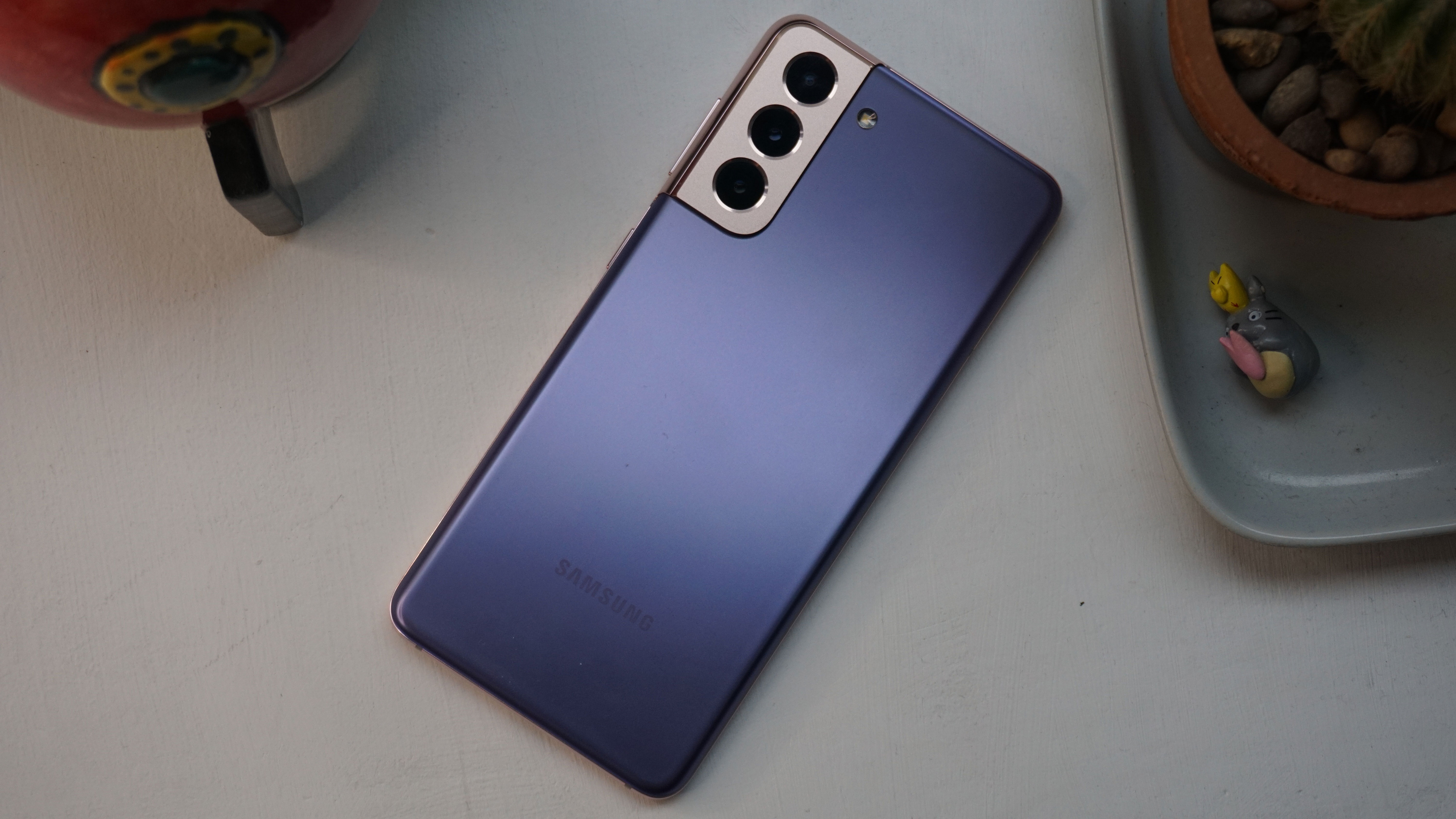
Design
Samsung stepped away from glass for the rear panel of the Galaxy S21, and embraced plastic. Sure, it calls this new material ‘Glasstic’, but make no mistake: it’s plastic.
The frame is still solid aluminum, however, and the front is made from top-quality Gorilla Glass Victus. This still feels like a high-class piece of work, just slightly less so than other recent Galaxy S phones.
We love how it looks, particularly the phone’s ‘Contour Cut’ camera module. It curves and swoops and melds into the frame of the phone, making a feature of something that’s so often an eyesore.
As always, Samsung comes up with the goods when it comes to color options, with a choice of Phantom Gray, Phantom White, Phantom Pink, and Phantom Violet.
We called the Realme “a little on the small side” in our review. At 158.5 x 73.3 x 8.4mm, however, it’s quite a bit bigger than the Samsung Galaxy S21, which measures 151.7 x 71.2 x 7.9mm.
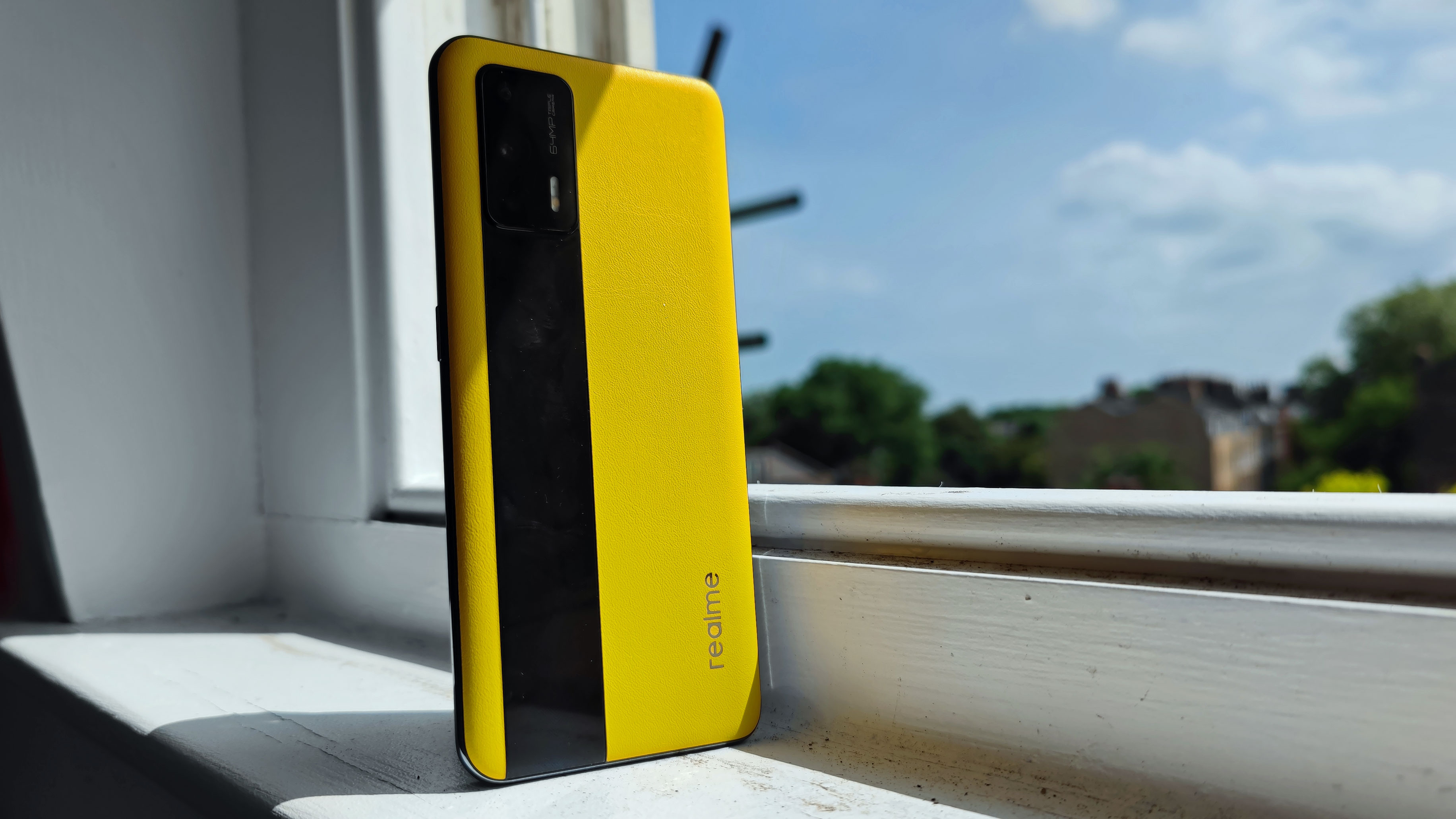
It’s also a lot heavier than Samsung’s phone: 186g as opposed to 169g. If minimizing pocket imprint is an important consideration, then the Galaxy S21 is your phone.
The Realme GT makes its own visual statement. Its design isn’t anywhere near as classy as the Samsung’s, but our test model’s yellow faux-leather rear and black glass racing strip certainly stand out.
In terms of materials, Realme opts for a plastic frame rather than an aluminum one, which means it’s not quite as solid or premium as the Galaxy S21. Only the Galaxy S21 gets an IP68 rating, too.
Both phones go with flat displays, with punch-hole selfie cameras at the top. The Galaxy S21 places it centrally, though, while the Realme GT moves it to the left corner.
While we’re addressing the fronts of these phones, both go with in-display fingerprint sensors. The Galaxy S21’s is 70% bigger than before, and also goes with a unique ultrasonic format rather than the GT’s more traditional optical solution. That makes the Samsung’s sensor easier to locate and more secure, if not quite as speedy as we would have liked.
Display
The Samsung Galaxy S21 packs in a 6.2-inch AMOLED screen, which is towards the smaller end of modern smartphone displays. The Realme GT goes with a slightly larger 6.43-inch AMOLED, though that’s still not considered huge by today’s standards.
Both displays adopt 1080 x 2400 FHD+ resolutions, which falls short of the QHD standards set by more expensive phones. At these sizes, though, both feel perfectly sharp.
You get the benefits of a 120Hz refresh rate in both instances, too, which is good to see. Content flows past fluidly in both cases.
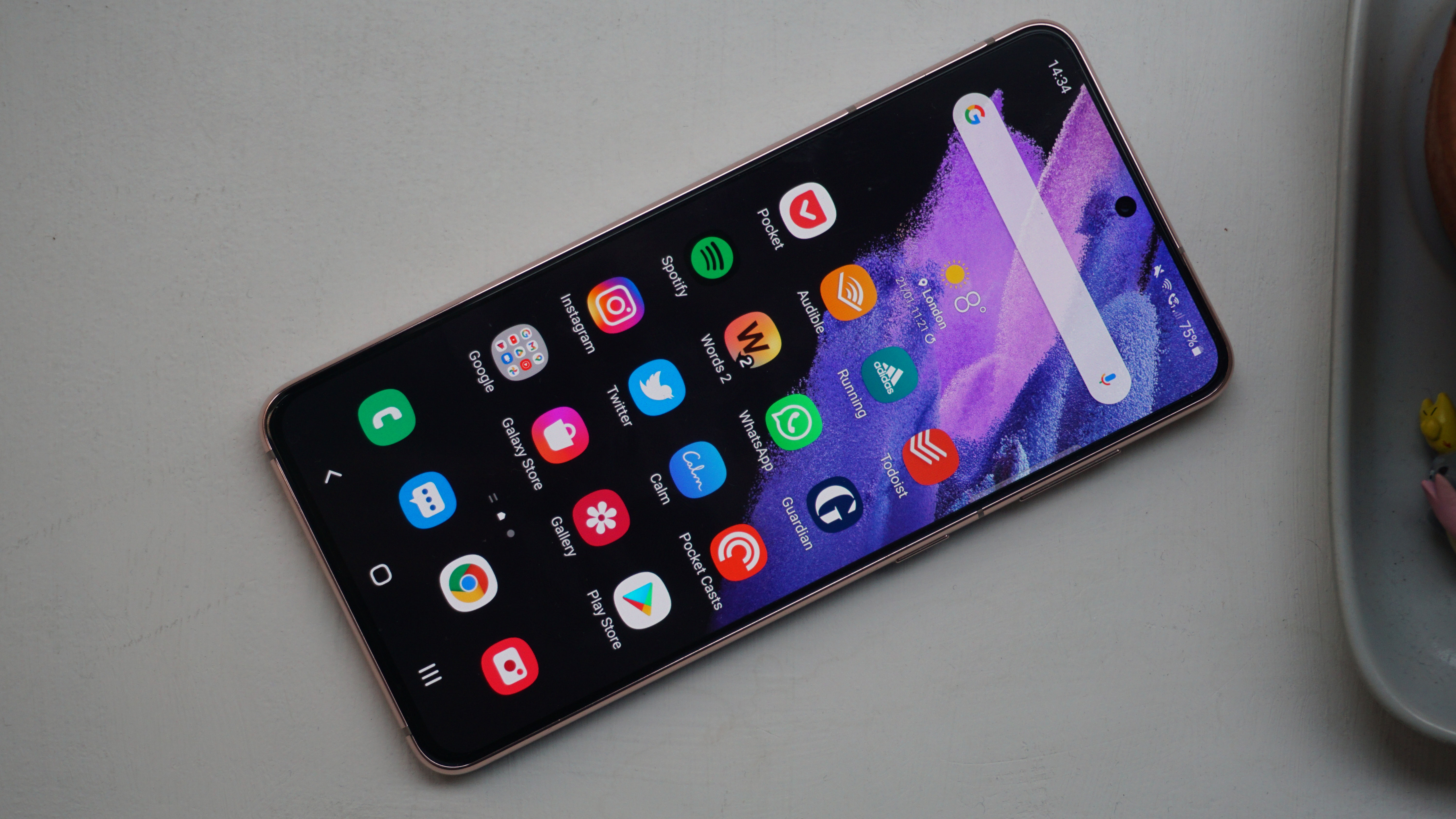
Aside from size, there are a couple of contrasting specifications here. The Galaxy S21's display gets brighter to the tune of 1300 nits, as compared to the Realme GT’s 1000 nits. Our reviewer noted a slight deficiency when trying to view the Realme GT’s screen in direct sunlight.
But the Realme GT strikes back with a more responsive 360Hz touch sampling rate versus the Galaxy S21’s 240Hz. In practical terms most people are unlikely to be able to tell the difference, but committed gamers just might.
Camera
If you wanted something tangible for the extra money you’ll be spending on the Galaxy S21, we’d probably direct your attention to the camera.
It might be the same hardware as we saw in the Samsung Galaxy S20, but it’s still flat out better than the Realme GT's equivalent. This starts with a true triple-lens setup, led by a 12MP f/1.8 main sensor, and backed by a 64MP f/2.0 telephoto and a 12MP f/2.2 ultra-wide.
The Realme GT, by contrast, has one of those fake triple-camera setups. You get a 64MP f/1.8 wide and an 8MP f/2.3 ultra-wide, but a fairly useless 2MP f/2.4 macro in place of a dedicated telephoto.
Samsung’s main camera captures chunky 1.8µm pixels, next to the Realme GT’s 0.8µm. The latter utilizes pixel-binning techniques to bolster detail.
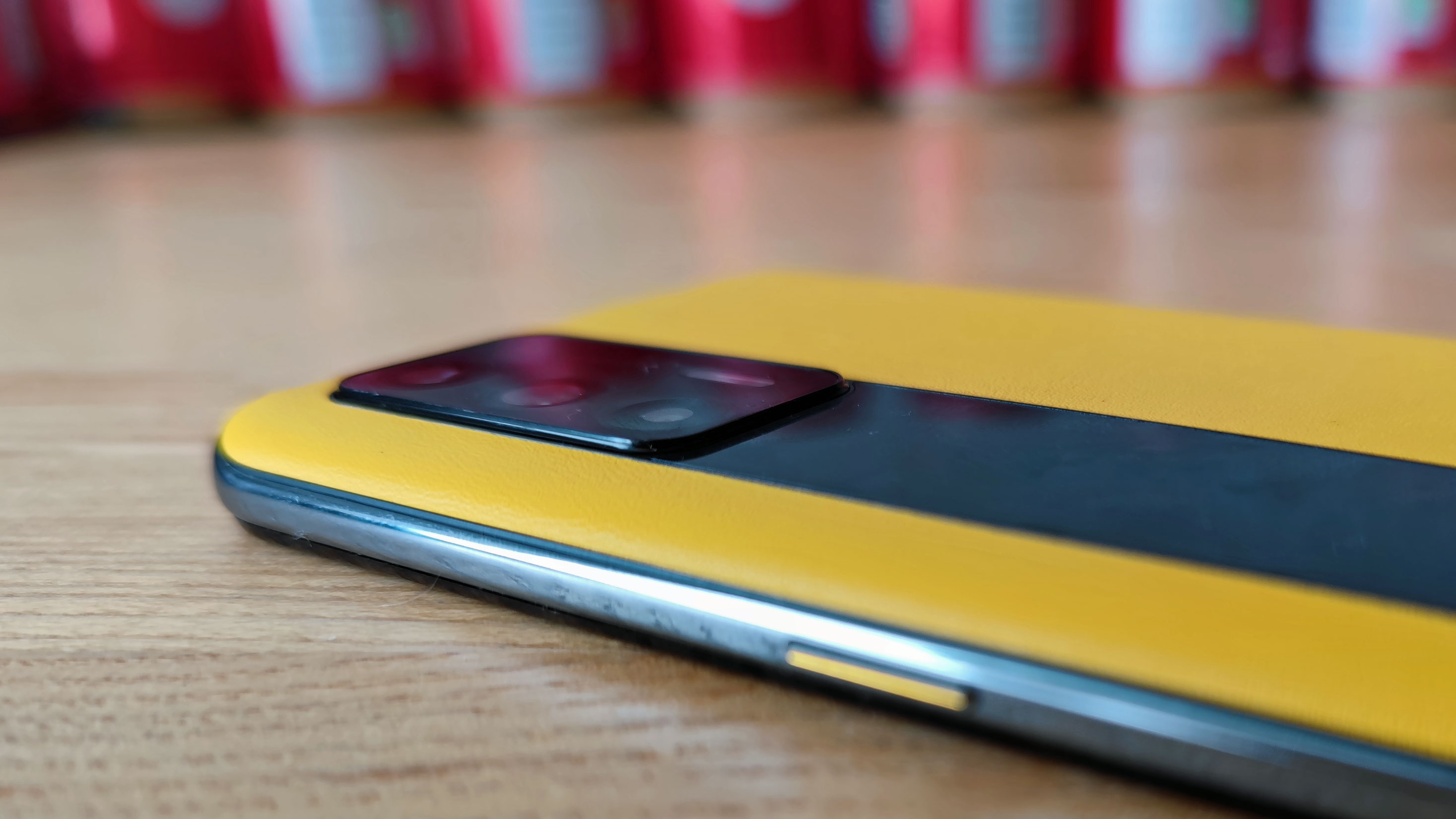
Shot quality is superior on the Galaxy S21. While Samsung’s vibrant color science might be an acquired taste, it beats out Realme’s good-but-not-great shots. We noted traces of oversharpening and overexposure in the latter, as well experiencing difficulty focusing on close-up subjects.
Ultra-wide shots seem a little closer, but the Samsung still wins out with more megapixels and a slightly wider view (120-degrees vs 119-degrees).
There’s really no comparison on the telephoto front, with the Galaxy S21 grabbing crisp 3x optically zoomed shots, and the Realme GT cropping in on that pixel-packed main sensor.
On the video front, the Samsung Galaxy S21 can capture 8K/24fps or 4K/60fps footage, while the Realme GT can only manage the latter.
Specs and performance
If you haven’t been paying attention to Samsung’s uneven approach to mobile processors over the years, you might be surprised to learn that the Realme GT wins this performance round.
It’s a simple matter of consistency. If you’re reading this in the US or China, then the Galaxy S21 ties with the Realme GT, with both devices running on Qualcomm’s Snapdragon 888 chipset.
But if you’re reading this anywhere else, then the ‘Global’ Galaxy S21 available to buy in your local shop will be running Samsung’s own Exynos 2100.
The latter isn’t a bad processor by any means, but it falls slightly short of the Snapdragon 888. Our Exynos 2100-powered Galaxy S21 scored 3,367 on the Geekbench 5 multi-core test, while the Realme GT scored 3,508.
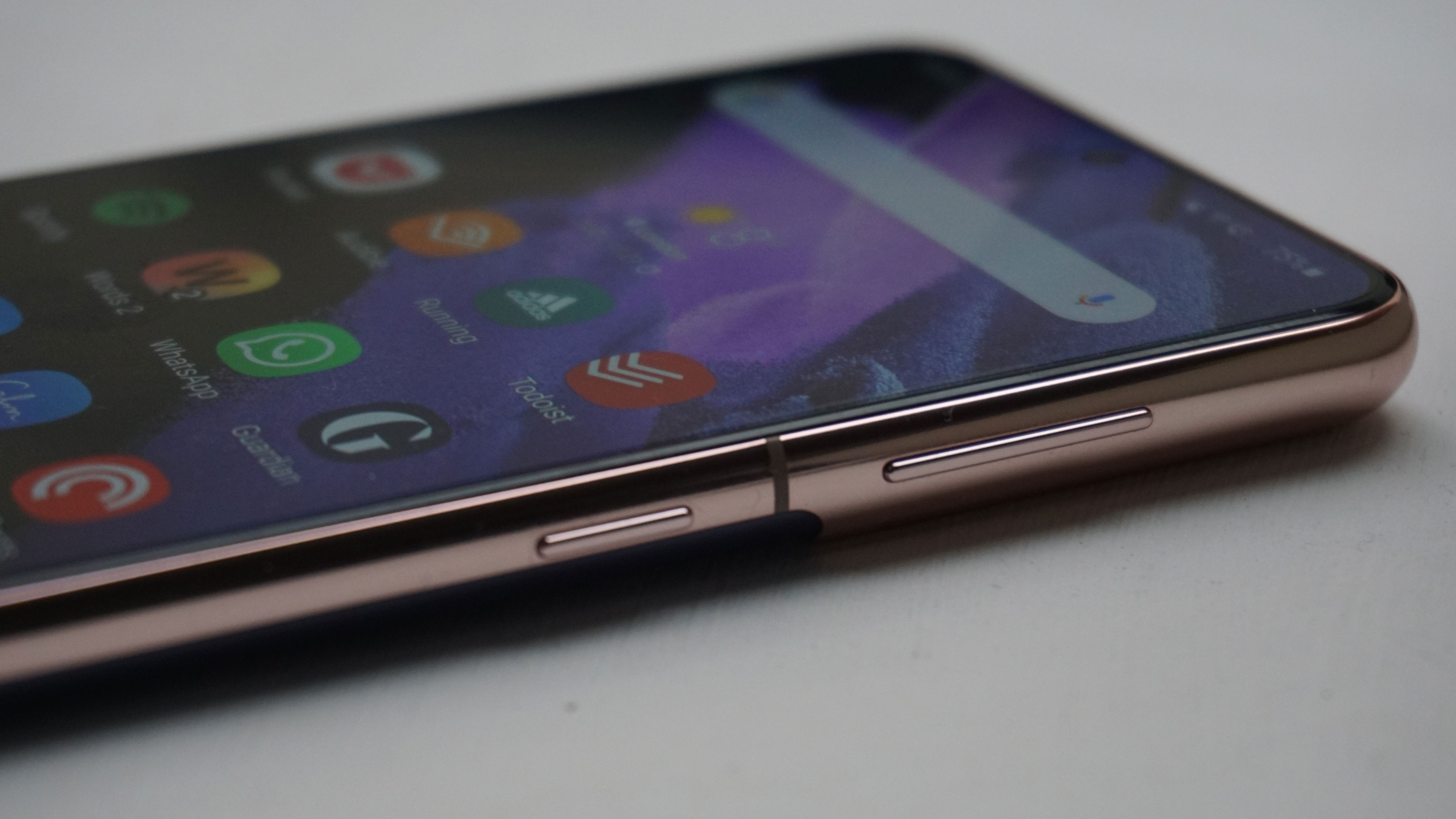
Not that this will make much if any difference in practical terms. Both phones run high-end games like Genshin Impact with high graphical settings, and both will breeze through multi-tasking and other demanding tasks.
Both phones come in 128GB and 256GB forms, and neither can be expanded, so it’s a tie in terms of storage, though the higher capacity Realme GT also has 12GB of RAM, up from 8GB in the smaller size. The Samsung Galaxy S21 comes with 8GB of RAM whatever storage capacity you choose.
When it comes to software performance, you’ll need to pick your busy custom Android UI poison. For our money, though, Samsung’s take on Android 11 is better. One UI 3.0 is much crisper and tighter than it used to be, with often useful tweaks and modifications, and appreciably zippy performance.
Realme UI 2.0, while it’s similarly full of customization potential, is uglier, more intrusive, and more packed with bloatware.
Don’t expect either phone to be among the first to update to Android 12, though.
Battery
The Samsung Galaxy S21 runs on a 4,000mAh battery, while the Realme GT goes with a larger 4,500mAh cell. That would appear to be a big win for Realme, but in the end it’s only a small victory.
We generally found that both phones would comfortably last a full day. On one occasion, when we were making more use of the Galaxy S21’s GPS and other power-hungry features, it ran out of juice at around 10pm.
Conversely, the Realme GT managed to hang on - just - even when we pushed it hard, with the battery life dropping to single-digit percentages by the end of the day.
The Realme GT also wins when it comes to wired recharging. It bundles in a rapid 65W charger, which will get you from 0 to 100% in a little over half an hour. Samsung doesn’t even give you a power brick in the box, and the Galaxy S21 only supports up to 25W charging anyway.
Samsung does win in one area, though. The Galaxy S21 supports 15W Qi/PMA charging, whereas the Realme GT doesn’t support any form of wireless charging whatsoever.
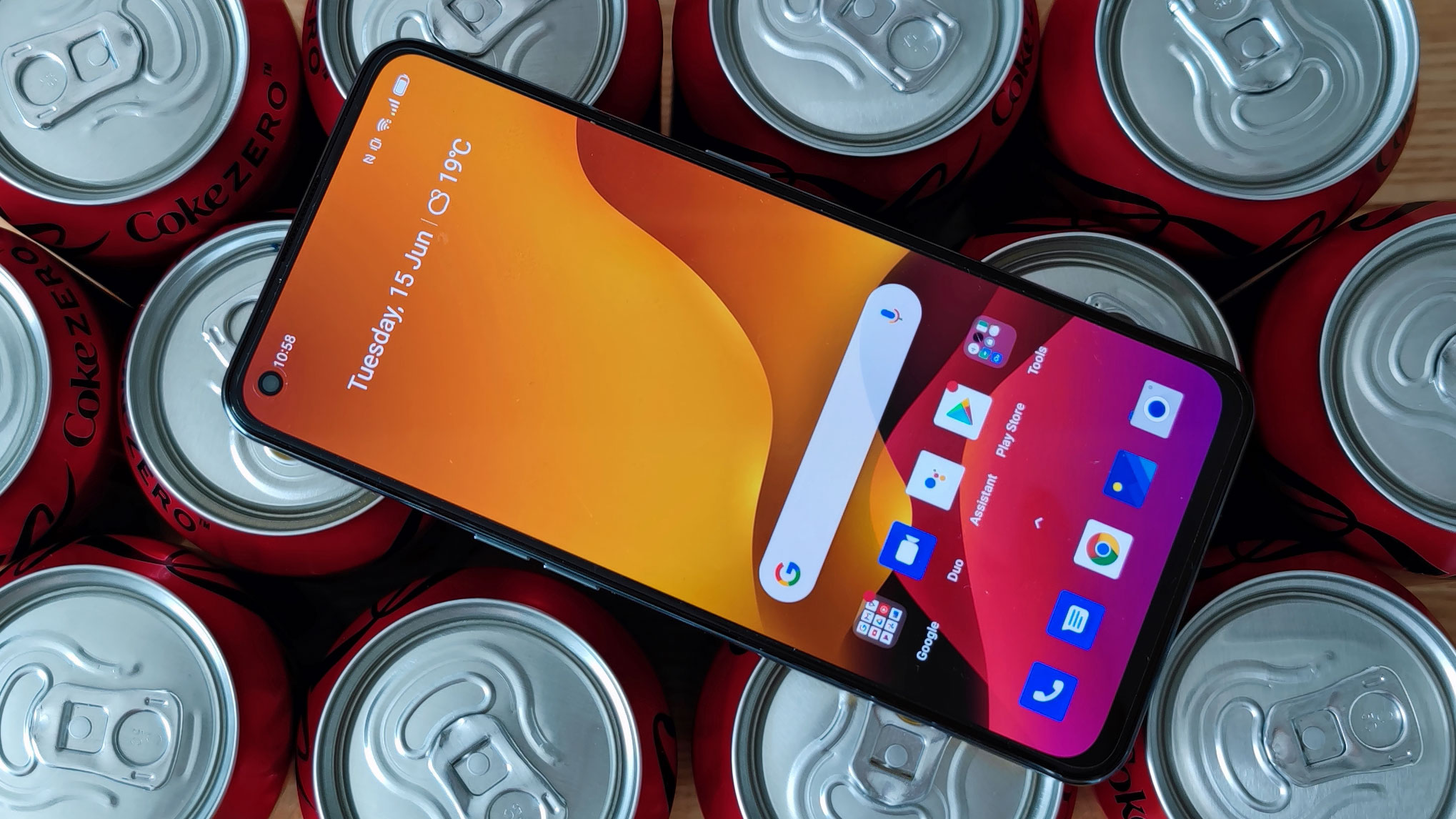
Takeaway
Both of these phones provide excellent value for money, albeit in slightly different areas of the market.
The Realme GT wins out as a pure bargain pick, providing equal or even superior performance and a broadly equivalent display for hundreds of dollars/pounds less than its rival. Of the two phones, it’s the GT that impressed us the most in terms of value.
However, the Samsung Galaxy S21 is undeniably the more rounded, flagship-like smartphone. Its triple-camera system is far less compromised, its design is superior, and it packs in more little premium touches like IP68 water resistance and wireless charging.
So the two questions you need to ask here are: how much are you willing to pay for your next smartphone? And, in which areas are you prepared to make sacrifices?
Whatever your conclusions are, rest assured you’ll be getting great value for money from the resulting pick.
- Both of these are among the best smartphones
from TechRadar - All the latest technology news https://ift.tt/2VgbWEB








No comments:
Post a Comment